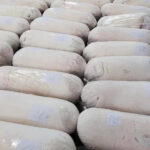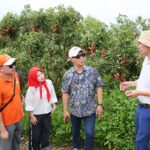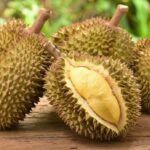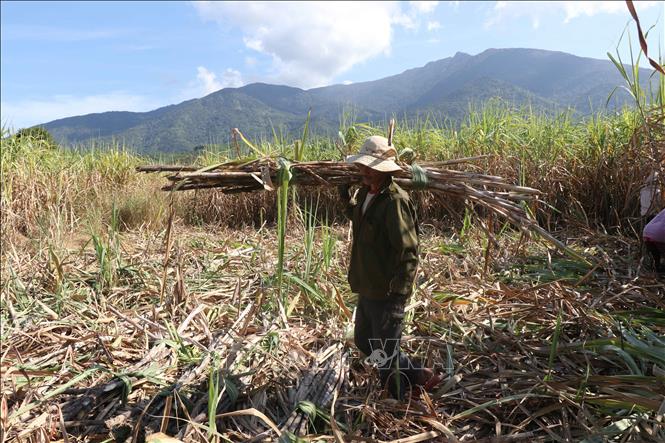
Khanh Hoa farmers harvest sugarcane with an average yield of 54 tons/ha.
Previously, if you traveled along Provincial Road 5 in the area of Ninh Tan and Ninh Tay communes, you would easily come across lush green sugarcane fields. But now, the locals have gradually switched to planting cassava and rubber trees.
According to Mr. Nguyen Ba Thuat, a resident of Hamlet 1, Ninh Thuong commune, Ninh Hoa town, his family has grown over 2 hectares of sugarcane and is expected to harvest 110-120 tons/ha. However, the costs for fertilizers, labor, and plant protection drugs have all increased. This sugarcane crop, the sugar mill purchased the sugarcane quickly, but the sugarcane yield was lower than previous years, only reaching 50-60 tons/ha compared to the previous 60-70 tons/ha. At the same time, the current sugarcane price is only from 1-1.1 million VND/ton of 10 CCS sugar, so after deducting all costs, farmers are barely making any profit. The total investment cost is 40 million VND, but when selling sugarcane, Mr. Thuat only earns 60 million VND, not including the effort of his family. Due to the lack of profit, many farmers have decided to reduce the sugarcane planting area. Mr. Thuat’s family used to plant 3 hectares of sugarcane but now only has 2 hectares left.
Similarly, Mr. Long in Trung hamlet, Ninh Tan commune, said that his family used to have 7-8 hectares of sugarcane around 1990. However, due to the low sugarcane price and the high labor and fertilizer costs, they no longer made any profit and decided to switch to planting other crops like rubber trees in the past 5 years.
As for Ms. Le Thi Van’s family, residing in Song Bung hamlet, Ninh Tan commune, after many years of being involved in sugarcane cultivation, they gradually shifted to planting cassava and rubber trees. Ms. Van shared that 5 years ago, her family managed 10 hectares of sugarcane, but now it has decreased to only 1 hectare. The main reason is that the local sugarcane price is lower compared to provinces like Gia Lai and Thanh Hoa, mainly due to the fact that the sugarcane price is based on the sugar content (CCS) used by sugar mills. The higher the sugar content, the higher the purchase price, and vice versa.
This creates disadvantages for sugarcane growers in areas with low sugarcane quality or difficulties in irrigation due to water shortage, resulting in reduced sugarcane yield and quality. In addition, high labor costs are also a major obstacle, making sugarcane cultivation no longer profitable as before. This forces Ms. Van’s family, as well as many other households, to seek alternative solutions such as switching to planting cassava and rubber trees, which have lower costs and are easier to manage in the current conditions.
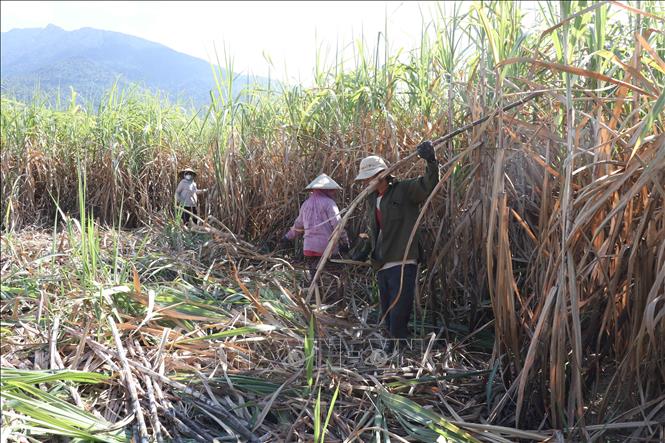
Khanh Hoa farmers harvest sugarcane with an average yield of 54 tons/ha.
Ms. Vuong Thi Thu Chung, Chairwoman of the Farmers’ Union of Ninh Tan commune, Ninh Hoa town, shared that in recent years, the sugarcane area of the locality has significantly decreased due to drought and water scarcity, causing a decline in sugarcane yield. Low sugarcane prices are also an important factor leading to a reduction in sugarcane planting area. The fact that people are no longer passionate about growing sugarcane is not only a challenge for farmers but also an issue that requires the attention of local authorities and sugar mills. To revive the sugarcane industry, supportive measures to reduce production costs, find solutions to increase sugarcane yield and quality, and expand the market for consumption are needed.
Adding more assessment on the decrease in sugarcane planting area, Mr. Su Hong Quoc Tinh, Chairman of the People’s Committee of Ninh Tay commune, Ninh Hoa town, shared that sugarcane has long been the main economic livelihood, making an important contribution to the local economy. Previously, the sugarcane planting area reached 3,000 hectares, but now it has decreased to only 1,700 hectares. Although one hectare of sugarcane can bring in a profit of 10-20 million VND, the high investment costs and labor costs keep this income relatively low. Currently, some land areas have been converted to planting rubber trees and cassava. Local people are eager for the stability of the sugarcane industry. For them, sugarcane cultivation is not only the main source of income but also a long-standing occupation.
“Therefore, sugar companies need better policies and strategies to encourage the development of the sugarcane sector. In addition, people also face many difficulties such as access to water sources, high fertilizer and plant protection costs, and labor scarcity. Sugar companies need a clearer policy to promote sugarcane development, especially in terms of ensuring fair and accurate prices for sugarcane growers,” said Mr. Tinh.
Mr. Nguyen Thanh Binh, Head of the Economic Department of Ninh Hoa town, Khanh Hoa province, said that there are 2 sugar mills in the town: Ninh Hoa Bien Hoa Sugar Company and Cam Ranh Sugar Company. At present, the sugarcane yield is about 55 tons/ha, lower than in the previous year (57 tons/ha).
According to the Department of Crop Production and Plant Protection of Khanh Hoa province, the sugarcane area for the 2023-2024 crop in the province is 7,641 hectares, compared to the previous 9,114 hectares. Currently, sugarcane is being harvested, with prices around 1,130,000 VND/10 CCS. This year’s sugarcane yield is lower than the previous year due to hot and dry weather, while some sugarcane varieties have been affected by stem borers (such as KK3)…




